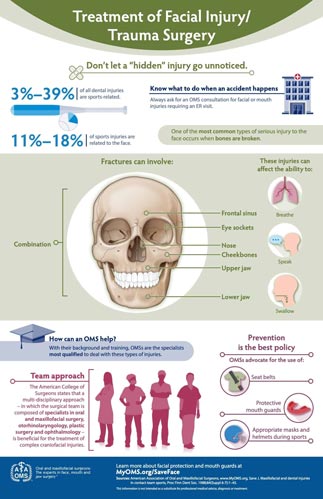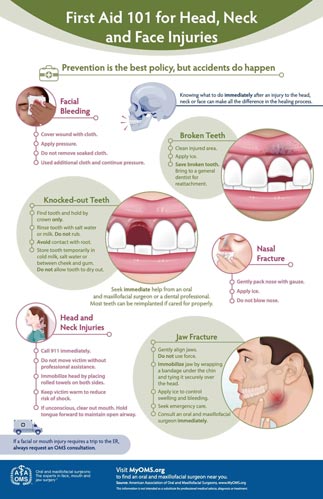Facial Trauma
Facial Injuries
The science and art of treating facial trauma require special training, experience, and an understanding of how the treatment provided will influence patients’ long-term function and appearance.

Causes of Facial Trauma
There are numerous types of facial trauma, such as gunshot wounds, stabbings, motor vehicle accidents, accidental falls, sports injuries, interpersonal violence, and work-related injuries, and they can range from simple lacerations and fractures to crushing injuries and total avulsion (torn away and detached) of facial structures.
Facial Trauma Treatments
Soft tissue injuries, such as lacerations, are repaired by suturing. In addition to providing the best cosmetic result possible, care is taken to inspect for and treat injuries to structures, such as facial nerves, salivary glands, and salivary ducts.
Fractures of the facial bones are treated in a manner similar to fractures in other parts of the body. Certain types of jaw fractures are stabilized with small plates and screws. This technique, called “rigid fixation,” allows for healing without having the jaws wired together and provides an improved recovery period, which enables the patient to return to normal function more quickly.
Facial cuts are treated with the fewest incisions necessary and, whenever possible, placed so that the scar is hidden.
Isolated injuries to teeth are treated with forms of splinting (stabilizing the tooth by wiring or bonding teeth together). If a tooth is knocked out, patients should seek help immediately to increase the chance that the tooth will survive reinsertion.


